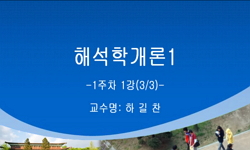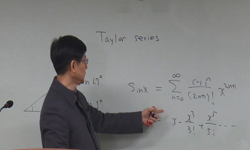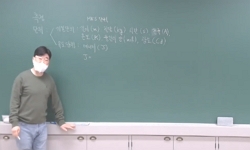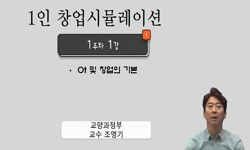본 연구는 우리 나라의 어문정책에 따른 한문교육의 변천 과정을 음하여 우리 나라 한문교육정책의 문제점을 발편하고 앞으로의 한문교육의 방향을 찾는데 목적을 두고 있다. 1895년에 縮鬪...
http://chineseinput.net/에서 pinyin(병음)방식으로 중국어를 변환할 수 있습니다.
변환된 중국어를 복사하여 사용하시면 됩니다.
- 中文 을 입력하시려면 zhongwen을 입력하시고 space를누르시면됩니다.
- 北京 을 입력하시려면 beijing을 입력하시고 space를 누르시면 됩니다.

어문정책과 한문교육정책의 변천 연구 : 開化期부터 日帝强占基까지 from the civilized age of Korea to the dark age under Japanese rule = Research Project Concerning the Transition of the Education Policy of Language and Chinese Composition
한글로보기부가정보
국문 초록 (Abstract)
본 연구는 우리 나라의 어문정책에 따른 한문교육의 변천 과정을 음하여 우리 나라 한문교육정책의 문제점을 발편하고 앞으로의 한문교육의 방향을 찾는데 목적을 두고 있다.
1895년에 縮鬪戈, 鬪漢交用文, 純漢文 3종의 '獨立誓告文'과 洪範 14條文'이 반포되었는데, 이는 근대적인 국가의석의 자각으로 한글 창제 이후 처음으로 讚家의 公漏戈에 純國文이 사용된 것이다.
근대적인 학제의 수립과 함께 틀을 연 한성사범학교와 각종 사립학교에서는 한문을 독립 교과로 설정하여 지도하였다. 학부는 1906년 8월에 普通學校令을 側定하면서 공립학교에서도 한문을 독립교과로 지도하다가 1909년 4월에 보통학교령을 改定하면서 국어, 한문 두 과목을 國語及漢文으로 하였다. 이는 日帝가 國誘인 朝鮮語를 縮小하고 日本語를 强化한 緖果이다. 1910년 韓關合邦으로 국권이 완전히 일본으로 넘어가자 朝鮮總督府는 敎育課程에 朝鮮語及漢文을 더욱 축소하고 國語(開本語)를 대쪽 확장시켰으며 19駱년 2월 15일 공포된 普通學檀規程부터는 조선어를 선택과목화하고 한문을 일본어에 포함시켜 지도하게 하였다.
한문 교육의 나아갈 방향으로는 첫째, 실용적인 차원에서 한자가 중국문자라는 생각을 버리고 동양 공통의 문자라는 인식이 확대되어야 한다. 둘째, 초등학교에서부터 간단한 한자를 지도함으로써 중학교에서 정상적인 한문교육이 이루어질 수 있는 기반을 마련한다.
셋째, 다음 교육과정에서 최소한 1,800한자를 지도할 수 있도록 안정적인 시수를 확보해야 한다.
다국어 초록 (Multilingual Abstract)
The goals of this research are to examine the political problems of Chinese composition education in Korea through the transitional processes of Chinese composition education which was influenced by a language policy and to discover the true direction...
The goals of this research are to examine the political problems of Chinese composition education in Korea through the transitional processes of Chinese composition education which was influenced by a language policy and to discover the true directions of such education.
In 1896, three types(only in Hangul, both in Hangul and Chinese composition and only in Chinese composition) of 'Korea's Declaration of Independence' and 'Hong-bum 14 Jo' ( It means 14 standard rules.) were promulgated. They are the first official documents written only in Korean since Hangul was invented.
The Hahn-seong College of Education and other private schools with the modem educational system taught Chinese writing as an independent subject. In August, 1906, the Ministry of Education established the Elementary Curriculum Statute, and they also let the public school students study Chinese composition as an independent course. In April, 1909, with the revised statute, Korean and Chinese composition were put together as Korean. Because Japan reduced the use of Korean as a mother tongue and increased the use of Japanese. In 1910, after the Japanese annexation of Korea ( after the loss of sovereignty), the Japanese Government-General Museum of Korea let the use of Hangul-Chinese composition be reduced in the curriculum. Also they let the Koreans study Japanese as their mother tongue. And then, by the new Elementary Curriculum Statute promulgated on February 15th, 1922, Korean became an optional subject and Chinese composition was taught with Japanese.
The course that Chinese composition education should take includes these provisions : First, the old idea that Chinese characters belong to Chinese culture only must be dismissed, and the understanding that Chinese composition is a common language of the East should be expanded. Second, through teaching basic Chinese characters from elementary education, the foundation by which desirable Chinese composition education can be attained should be formed. Third, in the next curriculum, a suitable number of lessons should be secured for the learning of the list of Chinese characters (that was limited to 1,800) to be successfully accomplished.
목차 (Table of Contents)
- Ⅰ. 序論
- Ⅱ. 本論
- 1. 開化期와 日帝强占期
- 1) 改化期
- (1) 시대적 상황
- Ⅰ. 序論
- Ⅱ. 本論
- 1. 開化期와 日帝强占期
- 1) 改化期
- (1) 시대적 상황
- (2) 어문 정책
- (3) 한문교육 정책
- 2) 日帝强占期
- (1) 시대적 상황
- (2) 어문 정책
- (3) 한문교육 정책
- Ⅲ. 結論
동일학술지(권/호) 다른 논문
-
- 청람어문교육학회
- 박영목
- 2003
- KCI등재
-
- 청람어문교육학회
- 李京和
- 2003
- KCI등재
-
- 청람어문교육학회
- 한명숙
- 2003
- KCI등재
-
- 청람어문교육학회
- 이수진
- 2003
- KCI등재




 KCI
KCI KISS
KISS







